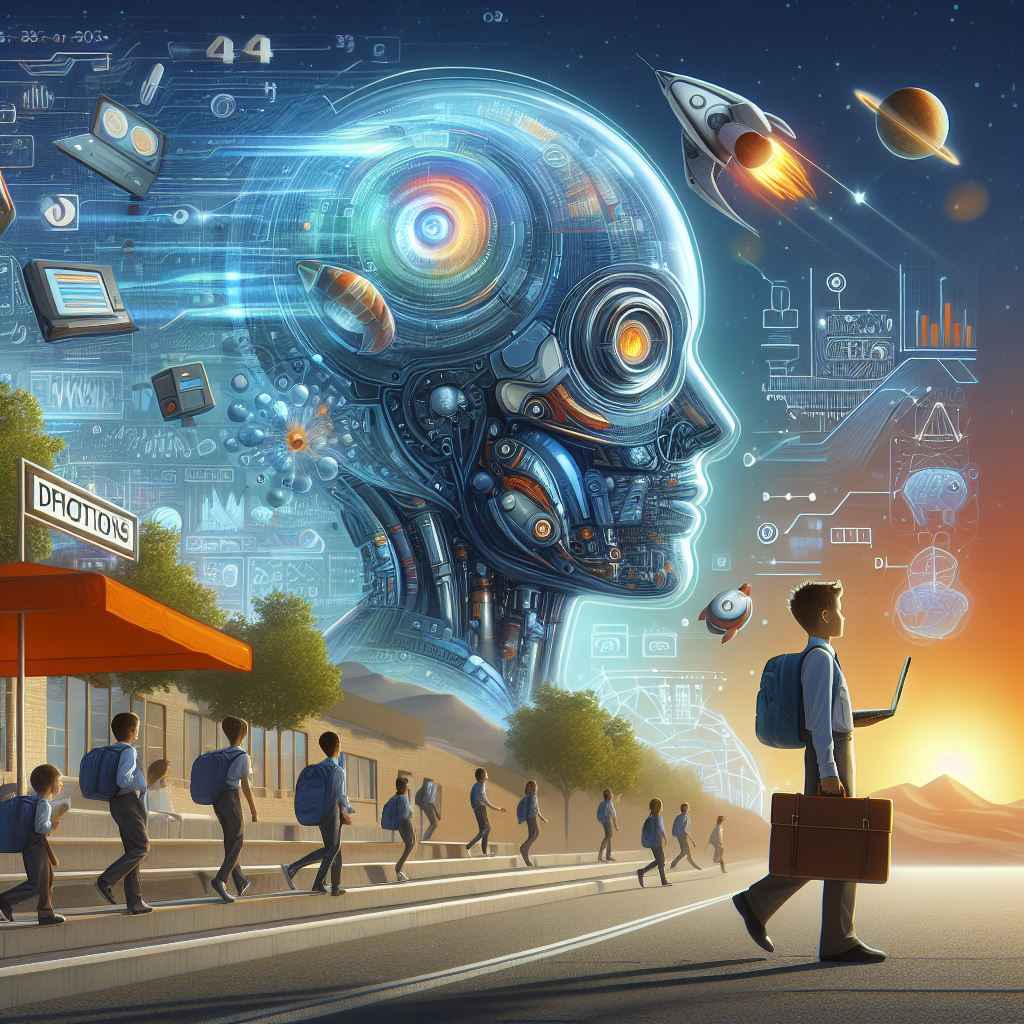The landscape of higher education has been in a state of flux over recent years, a trend that shows no sign of abating. With advancements in technology, shifts in global economies, and the continual re-evaluation of student needs and expectations, institutions around the world are poised for transformation. This article delves into the emerging trends and predictions that are set to redefine the future of higher education, Innovative Projections.

Technology Integration and Digital Classrooms:
Technology Integration and Digital Classrooms: One cannot talk about the future of higher education without acknowledging the role of technology. The digital revolution has made online learning a staple. Interactive learning environments, AI-driven personalized courses, and virtual reality experiences are not futuristic musings but current events stretching into the horizon. The integration of technology aims not only to mirror in-person experiences but to enhance them through greater accessibility and personalized learning paths.
The Surge of EdTech Innovations:
The Surge of EdTech Innovations: EdTech startups are continually cooking up new innovations. The burgeoning market for learning management systems (LMS), student engagement platforms, and remote proctoring software suggests a future where technology reshapes the academic journey. Moreover, mobile-first approaches are making learning as accessible as checking one’s phone, catering to a generation of learners who demand world-class education at their fingertips.
Data-Driven Personalization:
Data-Driven Personalization: The use of big data and analytics is set to become more pervasive in tailoring educational experiences to individual learning styles and needs. Data can guide course corrections, identify at-risk students, and provide invaluable feedback on curricula effectiveness, driving a more student-centric approach to education.

Flexible Learning Formats:
Flexible Learning Formats: The traditional university model is becoming more pliable, bending to accommodate a variety of life circumstances. Expect more accelerated courses, part-time learning opportunities, and modular education that allows students to stack credentials as they go. This flexibility ensures that education is compatible with career development, family responsibilities, and lifelong learning ambitions.
Emergence of Micro-Credentials and Badges:
Emergence of Micro-Credentials and Badges: As the demand for continuous skill development grows, so does the popularity of micro-credentials and digital badges. These bite-sized qualifications allow students to demonstrate mastery of specific skills and knowledge areas, catering to a job market that increasingly values versatility and continuous learning.
Industry-Academia Partnerships:
Industry-Academia Partnerships: Universities are far from isolated ivory towers; they are now hotbeds of collaboration with industry partners. These alliances give rise to curricula designed to meet current market needs, internships, and apprenticeships, establishing direct pipelines from classroom to career.
Global Education and Mobility:
Global Education and Mobility: The walls of higher education are expanding, not just metaphorically but literally. Cross-border education will become even more prevalent, with more students studying abroad and institutions setting up campuses internationally. This reflects a globalized world where cultural and intellectual exchange is integral to higher education.

Sustainability and Social Responsibility:
Sustainability and Social Responsibility: The curriculum of the future is expected to be interwoven with principles of sustainability and social responsibility. Educational institutions are adopting Green policies and integrating them into their curricula and campus operations, recognizing their role in championing sustainable development.
Lifelong and Lifewide Learning Ecosystems:
Lifelong and Lifewide Learning Ecosystems: Higher education institutions are reconceptualizing their role, no longer as gatekeepers of knowledge, but as platforms for lifelong and lifewide learning. This encompasses not just academic learning but professional, civic, and personal dimensions as well, recognizing that education is a continuous process.
Changing Demographics and Inclusivity:
Changing Demographics and Inclusivity: With the understanding that talent is distributed across populations regardless of age, race, or socioeconomic status, higher education is striving for inclusivity. Initiatives aimed at adult learners, underrepresented minorities, and non-traditional students are pivotal in democratizing access to education.
The Challenge of Affordability:
The Challenge of Affordability: The cost of higher education is a pressing concern and point of potential innovation. Students are seeking value for their investment, prompting institutions to find ways to cut costs via technology, partnerships, and alternative funding models, such as income-share agreements.
Educational Content In Non-Academic Formats:
Educational Content In Non-Academic Formats: The lines between education and entertainment are blurring. Educational content is increasingly being delivered through podcasts, YouTube channels, and other non-academic formats, making it more engaging and accessible.
Predictive Trends and the Unforeseen:
Predictive Trends and the Unforeseen: While we can make educated guesses about the future based on current trends, the real trajectory of higher education will be shaped by factors we cannot yet fathom. Advances in technology, unforeseen economic conditions, and shifts in social attitudes will all play their part.
Conclusion:
In conclusion, the future of higher education is not etched in stone but is being written now, in real-time, with the ink of innovation, inclusion, and adaptability. A flexible, accessible, and personalized educational system is on the horizon, with the potential to prepare generations for the unknown challenges of the future. Higher education must rise to these opportunities, embracing both technology and tradition, to cultivate a more educated, skilled, and conscientious world.











